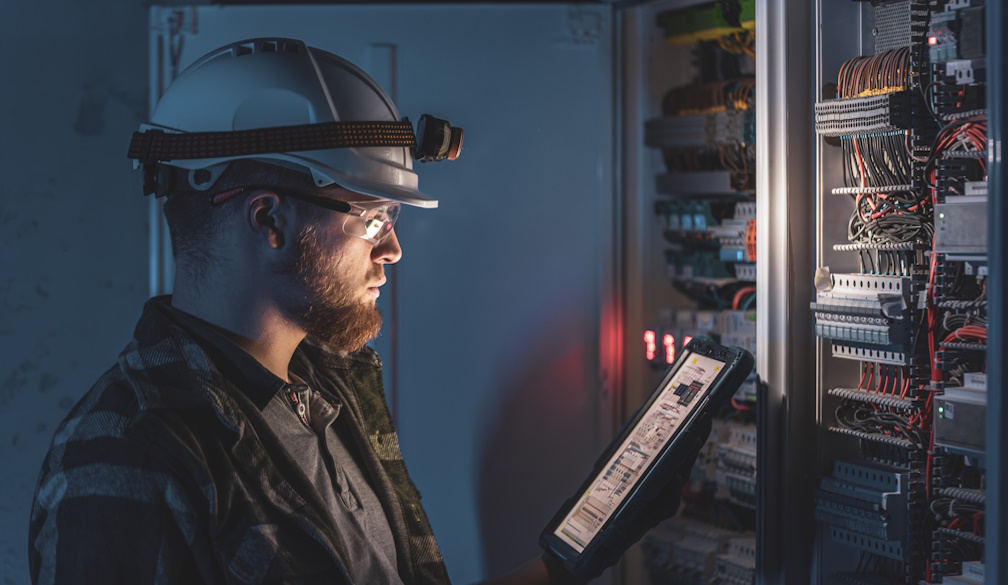Creating Multi-Variant Landing Pages with AI and Headless CMS Content Libraries

The urgency for personalized, high converting landing pages is real. The static, one-size-fits-all, always effective, converting landing page is a thing of the past. As the world becomes more personalized, customers expect access to goods and services that align with their needs, interests and behaviors. Multi-variant landing pages the various options of a singular landing page forged from adjustments made in design, content or messaging help companies provide such offerings. The challenge, however, is that generating these variants requires manual efforts that are inefficient, time consuming, resource intensive. But with AI and headless CMS content libraries, marketing teams can produce and publish extensive numbers of variants through efficient and effective scalable adjustments entering a new realm of automated personalization.
Why You Need Multi-Variant Pages for Marketing in the First Place
Multi-variant landing pages give a business the opportunity to test and personalize different experiences based on the sending audience, campaign channel, and customer activity. For example, a business would want to customize a headline based on the identified buyer persona and it may want to change imagery based upon the geographical location of that user; both are multi-variant opportunities that lead to better conversions and engagement. The power to quickly spin up the volume of pages allows marketers to respond to the data they receive at any time testing what is anticipated, optimizing findings that succeed, and offering hyper-relevant journeys. Why choose Storyblok becomes clear in this context, as it provides the modular structure and automation required to handle such scale effortlessly. Yet without some form of automation, such complexity and volume of variation would be impossible to manage. Enter the headless CMS via AI to scale without losing effort.
Where AI Comes In to Create the Possibilities for Multi-Variant Pages
AI sits at the heart of this eventual dynamic page creation process. It will not need human input to determine how content blocks should shift; it will instead rely on behavior, campaign performance, and persona data to piece together information that makes sense per individual circumstance. Thus, AI can switch hero images and headlines based on what it knows about the audience, prioritize certain testimonials while burying others, or reorient certain elements to put important messaging in focus. AI can do this with access to content stored in a structured way within the CMS. As it is fed blocks of information, it can create pages meaningfully and for conversion in real-time. This type of opportunity eliminates manual construction processes while optimizing the user experience for every view.
How a Headless CMS Powers the Content for Variation
A headless CMS is the behind-the-scenes mechanism for how multi-variant pages get created from a content standpoint. A headless CMS removes content from the front-end experience; therefore, teams can create modular content blocks like CTAs, product descriptions, or even components within forms and house them in a central content library. Those libraries are tagged and structured with metadata for easy access and understanding later, meaning AI systems have the ability to pull from these credible libraries when constructing page variants. The assembly of each version dynamically comes from approved, on-brand content. The headless CMS becomes a single source of truth for content delivered into each variant page.
Content Organization for Smarter Assembly
In order to generate multi-variant pages for AI, content must be machine-readable and assembled in a modular fashion in the first place. By establishing content models for each segment of the asset headlines, subheads, feature paragraphs, testimonials, etc. and tagging them with their own attributes (tone, language, audience, funnel stage, etc.), the AI knows not only what the content is but where it should go. This means thousands of combinations can be created from a relatively few number of content pieces because the assembly is like a Lego construction where each piece is already defined based on future potential. Scaling is also easy because what it takes to create one multi-variant piece can be the same effort that creates thousands.
Personalization to the Variant Level
Insertion of a headline with someone's name is not true personalization. No, multi-variant landing pages can adjust every single piece of a page to represent someone's specific intent signals or behavioral insights. For example, someone who came from a paid ad may see urgency-based language encouraging them to sign up; on the other hand, someone who has been converted already may see loyalty credits or product options. Armed with real-time data and CMS content at its disposal, AI can determine what the most appropriate assets are for any like-user group. This is game-changing for engagement across the board, making things more relevant and generating far more qualifying conversions than are possible without this technology as doing this manually would require thousands of unique pages to get created.
A/B and Multivariate Testing on Autopilot
Multi-variant landing pages make testing easy and automatic, too. There's no need to create separate A/B or multivariate testing environments where headlines or CTAs or layouts need to be switched out to determine what's propelling better outcomes because AI can automatically create the variances based on pre-determined testing variables. This is supported by a headless CMS which knows which content blocks are being tested, measures results and sends that information back to the system. Over time, AI can learn which options yield the best results and automatically favor those assets. This creates a cyclical environment where every instance of a multi-variant landing page is smarter than the last thanks to real-time data collection and automated adjustments.
Brand Consistency Across Variants
Another benefit of so many variants is the potential for brand experience consistency. A headless CMS exposes the AI only to approved content that aligns with brand guidelines. Furthermore, integrated design systems within modular components the colors, typography, padding, and arrangements act as rules that maintain otherwise visually disparate, dynamically generated pages, coherently. This does not mean that AI cannot be creative; it simply allows for the safe confines with which to create so that it won't go out of brand. Thus, while the system will become more complex, it can successfully expand with personalization and experimentation while enhancing trust through a similar look, feel and voice across all variants.
Reduced Production Costs and Manual Work
Historically, the only thing preventing multi-variants of landing pages is the production cost and manual work required to produce them. Designers, developers, strategists and content creators find it challenging to keep up with the manual demands of hyperpersonalized content. But when AI and a headless CMS structure come into play, much of the previous manual labor can be shifted to the AI. What teams will need to do is create high-quality content modules and establish the appropriate strategies; once that's accomplished and added to the headless CMS, the AI can render and publish a variety of permutations as it's trained to understand what works. This fosters greater efficiencies and reduces time to publication as it blends automation with human-engineered creativity.
Global Campaigns with Localized Variants
Landing page multi-variants are ideal for global campaigns yet require micro-targeting that can exist at scale. For brands that have international reach, AI can pull from CMS metadata to create subpages that include language, area region, compliance components, etc., to ensure accurately generated localized variants. From regional offers that align with seasonal holidays to enhanced sitelinks that are compliant with regional laws, AI will understand what kinds of variants it needs to create in order to operate with consistency at larger, international campaigns but localized relevance at smaller endeavors. Often localization is a delay for review and translation; with AI, these steps will happen in real time at scale.
CRM and Behavioral Insights to Create More Relevant Variants
For multi-variant landing pages to resonate and convert, AI initiatives shouldn't just rely upon CMS page content. They should be integrated with rich data about the user. By plugging into the CRM database, behavior tracking and larger campaign success, AI can make better decisions about page variants. For example, someone in a trial state may get a case study-rendered variant; someone who is already purchased but hasn't committed yet may get a variant with urgency messaging. With all this integration, variants are more likely to help users convert because every possibility isn't just a guess but a calculated response based on the user's journey thus far.
Scalable Solutions That Future-Proof Landing Page Efforts
Digital experiences change in the blink of an eye and if scaling appropriately isn't applicable, efforts may go to waste. Headless CMS solutions, alongside the AI-driven assembly of required content, create a foundational architecture that is future-proof and able to scale. The metadata and modular libraries needed to support such an endeavor allow for AI to create variants for new channels, devices or personalizations without reinvention. Whether voice activation becomes a prominent channel, a new market emerges or new UX requirements dictate change, this scalable solution keeps landing page efforts efficient now and later aligned to business goals.
Marketing Team Empowered to Self Service Variants Creation
AI and headless CMS platforms empower marketing teams to create their own variants for campaigns without developer intervention. User-friendly interactivity, drag-and-drop attributes and pre-approved blocks of content allow marketing teams to establish their own goals, identify audiences, and kick off variant generation. This self-service model lessens dependency on technical team engagement, fosters experimentation with variants, and quick turn-around on launch. By eliminating the tech development cycle that aligns everyone with strategy and brand awareness, the company has the best of both worlds and teams operate much more efficiently.
Conclusion: Building Smarter, Faster, and More Targeted Experiences
Landing multi-variant landing pages used to be an extensive undertaking for marketers prior to AI and headless CMS content libraries. Instead of needing all of the design, development and content external to one campaign, everything can now be done automatically in real time, cost effectively and with intelligent rationale. Implementing AI and a headless CMS library eliminates the choke points that naturally delay campaign go-lives and associated content adjustments while allowing teams the ability to scale without incremental-heavy effort.
With AI on board new headless CMS platforms, marketers can create their own highly customized, optimal value landing pages concurrently and consistently across every channel. That's because AI provides the intelligence to create the landing pages based on variances in audience needs while the CMS provides the vetted assets always at the ready with modular components there's no room for error as everything is already pre-approved and brand compliant. The design tenets behind modular assets in conjunction with guided content libraries represent consistency across channels while project funnels are less like linear progressions and more like intricate pipeline opportunities that engage in real time adjustments on the fly.
With this ability, marketers can create and release landing pages quicker than ever before for all types of audiences without concern of sacrificing brand integrity or diminished performance regardless of type of demographics, geo-targeting or intention behind useful page variants, AI and a headless CMS can work together to determine what's best when, where, to whom and why.
At a time when relevance is required for attention and micro-attentions foster profitability, multi-variant landing pages are no longer an advanced practice or something only certain marketers can afford it's the expected norm, something everyone who values a digital marketing effort should value creating if not already enjoying. And with the proper systems in place understanding how to create them in real-time, multi-variant landing pages become less of something that's good to have and more sustainable to create easily; they can be done hyper-intelligently and strategically scaled to align with consumer-speed existence.













